This was published 7 months ago
Wait, it closes this weekend? A last-minute guide to navigating the Triennial
By Nadia Bailey
You’ve put it off and put it off. You thought you had plenty of time. But suddenly you’ve realised that the NGV Triennial, which is free and only happens every three years, closes this Sunday. You’ve seen the Instagrams of the banana taped to the wall, and you think you remember something about a robot dog.
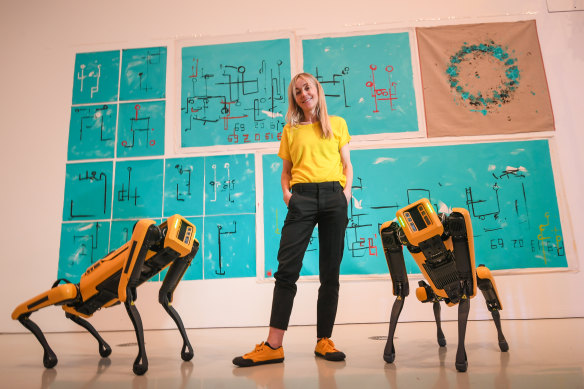
Artist Agnieszka Pilat has created an artwork with robot dogs Basia and Bonnie.Credit: Justin McManus
First, some housekeeping. The first rule of seeing the Triennial is don’t try to see all of the Triennial. The show spans 120 artists, designers and collectives, spread across four levels and countless spaces. If you attempt to see it all, you’ll end up tired, grouchy and with a camera roll full of artwork you haven’t really looked at. Don’t do this. Instead, plan ahead, take your time, and don’t underestimate the restorative power of the Great Hall’s beanbags.
If you’re going to the Triennial in its last weekend, this is how to make the most of it.
If you have an hour or less
The good news is that you can see many of the Triennial’s buzziest artworks without ever leaving the ground floor. The key here is to keep your visit tight: after passing David Shrigley’s monumental thumbs-up and glimpsing Julian Charrière’s fiery video work through the water wall, turn right at Thomas J Price’s giant figurative sculptures, and begin your journey.
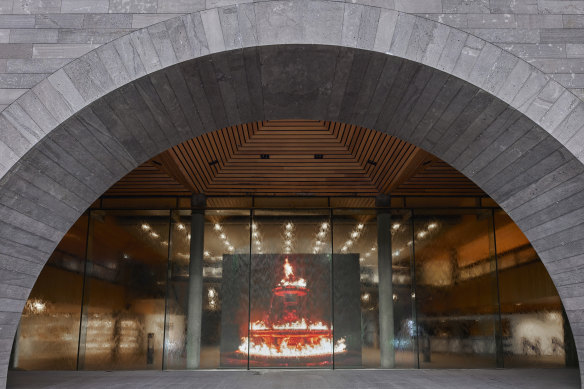
Julian Charrière’s And Beneath it All Flows Liquid Fire is displayed near the gallery entrance.Credit: NGV
In the right-hand wing of the gallery, you’ll find the gaffer-taped banana, officially known as Comedian by Maurizio Cattelan, as well as Agnieszka Pilat’s deeply unsettling robot dogs (who may or may not be painting self-portraits). Whip around back through Federation Court and head past the café into the left-hand wing: highlights here include Hugh Hayden’s eerie installation The End, John Gerrard’s arresting video work Flare (Oceania) and Azuma Makoto’s lovely floral vitrines.
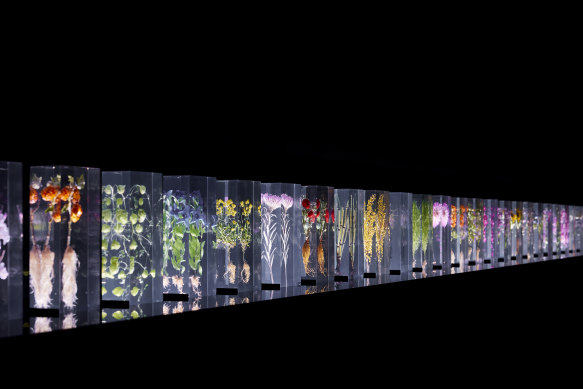
Azuma Makoto’s ‘Block Flowers’ on display. Credit: Sean Fennessy
Don’t miss the talking mouse as you exit through the gift shop, where any number of banana-emblazoned products are available to commemorate your visit.
If you have a few hours
You will be tempted to try to see everything; resist this urge. Instead, tailor your visit to suit your tastes.
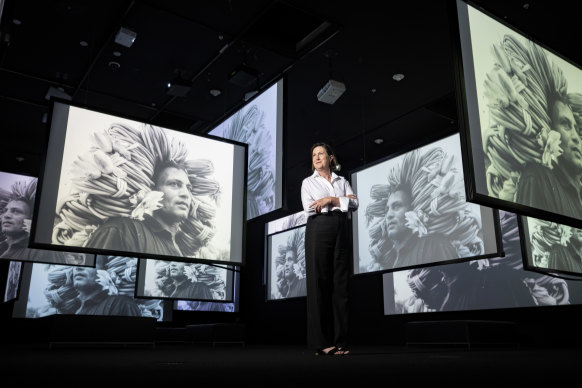
Susan van Wyk, NGV senior photographer curator, with the “Megacities” exhibition at the Triennial. Credit: Wayne Taylor
Prefer photography to other mediums? Prioritise Level 3, where the Megacities project will give you a snapshot of ten of the world’s most populous cities through the eyes of ten contemporary photographers, as well as Hoda Afshar’s contemplative work The Fold.
Want to avoid the crowds? Take the path less travelled through level 1, where Triennial works are interspersed throughout the China, India, Korea, South and South-East Asia collections – and don’t miss Diana Al-Hadid’s response to the NGV’s ancient and medieval collections. Want the grand dames of modern art? Make a beeline for the far reaches of level 2 where you’ll find works by Tracey Emin and Yoko Ono, then work your way back through the gallery from there.
If you have all day
A visitor recently complained to NGV staff that they had to walk through galleries hung with artworks from the permanent collection in order to see Triennial works. It was, in their opinion, an inefficient way to experience the blockbuster exhibit (completely incidentally, they were from Sydney).
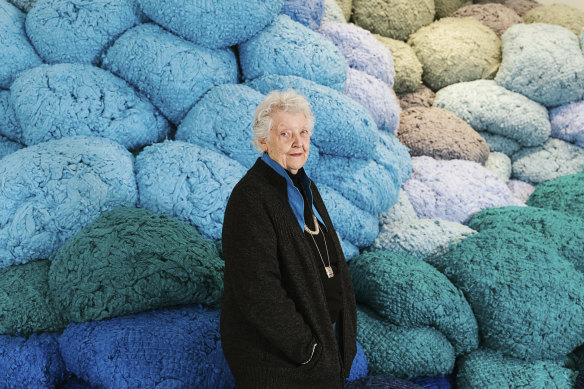
Sheila Hicks’ vivid work is on display.Credit: Alison Jacques
If you have all day to view the Triennial, let inefficiency be your guide. Forgot the maps and be guided by the ebb and flow of your whims – one of the most interesting aspects of the Triennial is that the works have been placed in conversation with the NGV’s permanent collections in ways that illuminate, critique or bring nuance to classical canons and past curatorial imperatives. This is an exhibition that rewards slow looking – even on the hectic final weekend. And one more piece of advice: bring a packed lunch. You’re going to need it.
The Booklist is a weekly newsletter for book lovers from books editor Jason Steger. Get it every Friday.